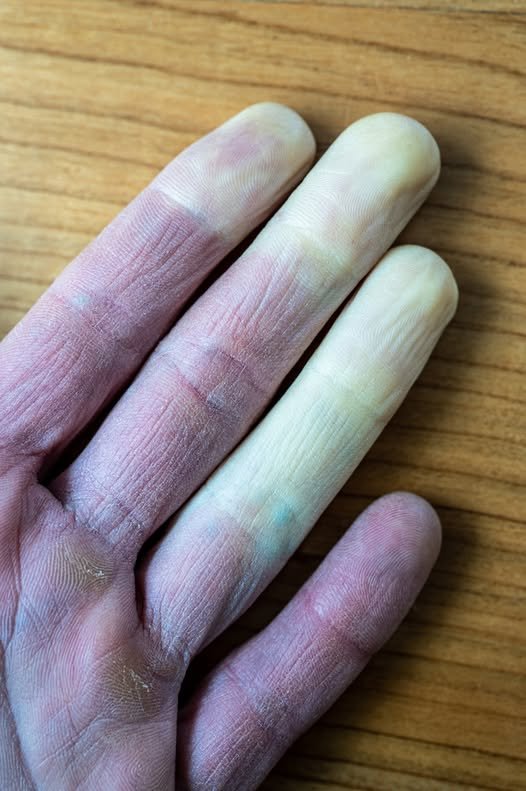When Should You Worry? 🏥
Raynaud’s syndrome is not always an isolated condition. It can be secondary to other diseases, particularly autoimmune diseases (such as scleroderma or lupus). Here are the situations where a medical consultation is essential:
-
If symptoms are very severe or worsen over time.
-
If you are over 40 and this is happening for the first time.
-
If only one hand or foot is affected.
-
If you also have joint pain, a rash, or muscle weakness. 🦵
-
If, despite warming, an area remains pale, painful, or numb for several hours.
An often overlooked detail: a ring stuck on a swollen finger can quickly lead to complications and become a medical emergency. ⚠️💍
What to Do in a Crisis? 🚨
The first thing to do: slowly warm your extremities. Put your hands in your pockets, blow gently on them, or immerse them in warm water (never hot, to avoid thermal shock). 🌡️💦
Also adopt some simple actions to prevent crises:
-
Protect yourself from the cold: gloves, thick socks, hand warmers. 🧤🧣
-
Reduce stress, which can also trigger symptoms. 🧘♂️
-
Avoid caffeine, tobacco, and certain vasoconstrictor medications, which aggravate spasms. 🚭
What if It Doesn’t Work? 🏥
Most of the time, Raynaud’s syndrome is mild and transient. But if it becomes disabling, a doctor may prescribe vasodilator medication to improve circulation in the extremities. 💊
In France, you can also contact a healthcare professional by calling 15, or consult your doctor to assess the situation. If you are in an underserved area, teleconsultation platforms can also guide you. 📞💻
Don’t Trivialize What Your Fingers Tell You 🤲
Our hands are often the first to alert us. If they change color, it’s not just because of the cold. It could be a sign of a deeper vascular problem. Listen to your body, and don’t hesitate to seek medical help if you’re still unsure. Because a simple tingle can be the starting point for better understanding your health. 💡

